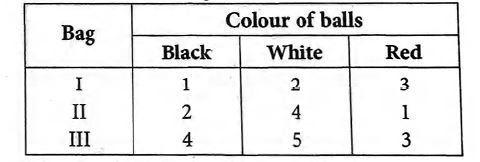Q.
Coloured balls are distributed in three bags as shown in the following table :

$A$ bag is selected at random and then two balls are drawn from the selected bag. They happen to be black and red. What is the probability that they have come from bag I?
Probability - Part 2
Solution: